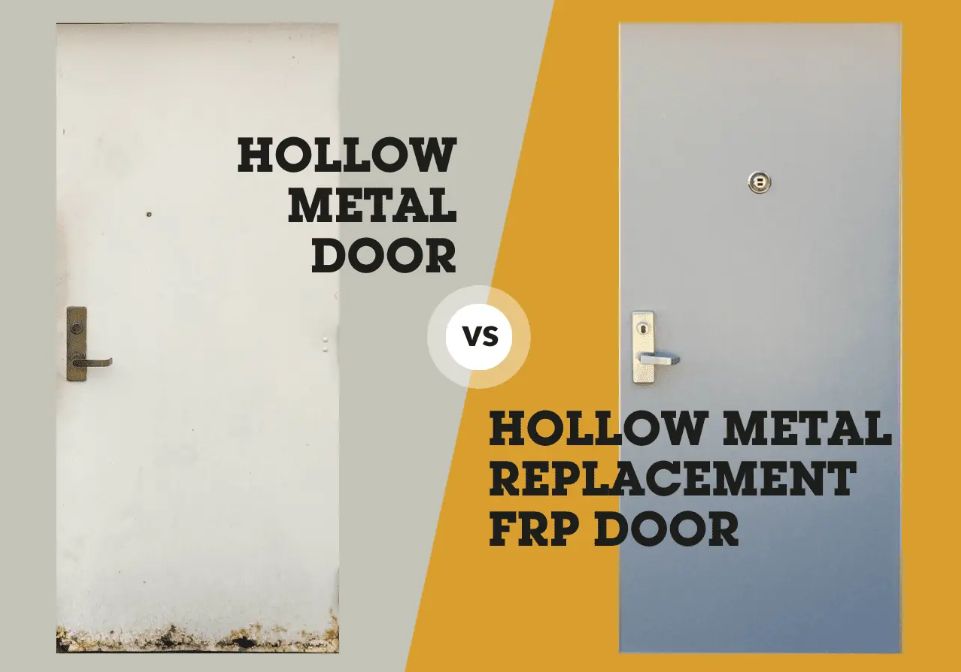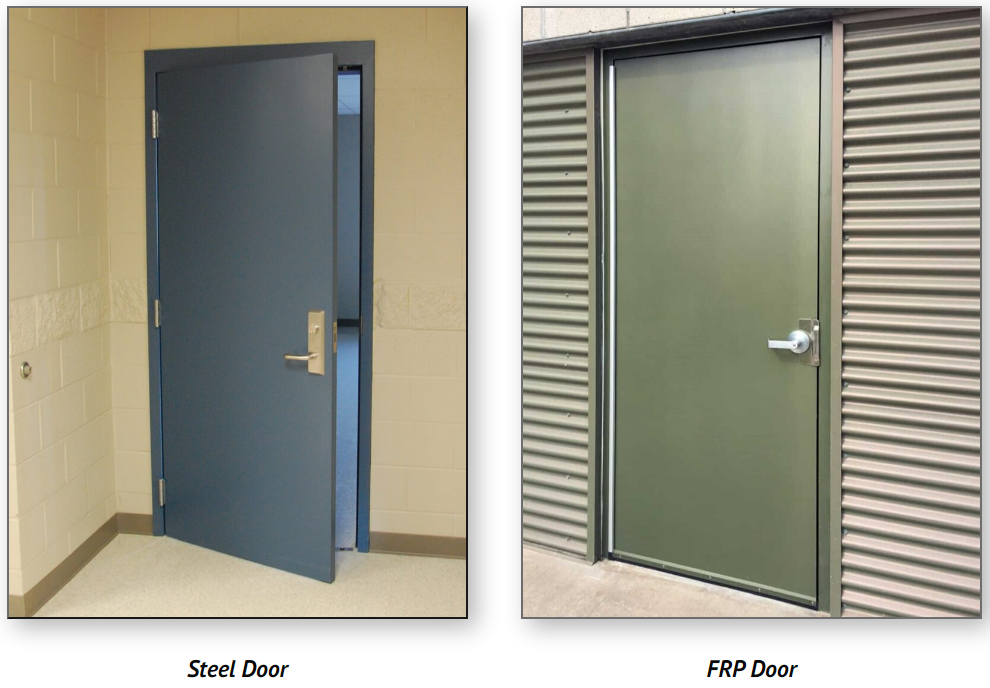For business owners in Youngstown, Ohio, our weather is no joke. The brutal winters, humid summers, and heavy rain can wreak havoc on a commercial building’s exterior. When it comes to your entryways, choosing the right door material is critical for long-term durability and performance. The two most common options are hollow metal and FRP (Fiberglass Reinforced Polymer), but the debate over FRP vs hollow metal doors often comes down to one key factor: the environment.
So, which material is the winning choice for your facility? This guide breaks down the pros and cons of each for our specific Ohio climate.
Hollow metal doors are the default choice for commercial construction for a reason. They are tough, reliable, and provide an incredible level of security and fire resistance.
Pros of Hollow Metal:
Unmatched Security: A steel door and frame provide the highest level of resistance to forced entry.
Fire Safety: Hollow metal doors and frames can be fire-rated for up to 3 hours, a critical requirement for many building codes.
Cost-Effective: For most standard applications, steel is the more budget-friendly option upfront.
Proven Durability: They can withstand decades of high traffic and physical abuse in schools, warehouses, and storefronts.
Cons in Ohio Weather:
The primary weakness of steel is rust. If the paint finish is chipped or scratched—a common occurrence in high-traffic areas—moisture from rain and snow can lead to corrosion over time.


While not as common, FRP doors are a specialized solution engineered to thrive where steel struggles. Think of them as the ultimate problem-solver for specific environments.
Pros of FRP Doors:
100% Waterproof: This is the biggest advantage in the FRP vs hollow metal doors debate. FRP doors will not rust, corrode, warp, or peel, even with constant exposure to moisture.
Chemical Resistance: They are highly resistant to cleaning chemicals, salt, and other corrosive agents, making them ideal for industrial or sterile applications.
Easy to Clean: The non-porous surface is easy to sanitize, a major benefit for food service and healthcare facilities.
Lightweight: FRP doors are lighter than steel, which can reduce strain on the frame and hardware over time.
Cons of FRP:
Higher Initial Cost: FRP doors typically have a higher upfront cost than standard hollow metal doors.
Lower Fire Rating: While fire-rated versions are available, they generally do not reach the 3-hour rating of steel.
The choice depends entirely on the location and application:
For most exterior and interior doors where security and fire rating are top priorities, Hollow Metal remains the cost-effective and powerful choice. Regular maintenance of the paint finish is key to preventing rust.
For any location with high moisture or corrosive elements—such as a car wash, water treatment plant, pool area, or food processing facility—FRP is the clear winning choice and a wise long-term investment.
At Prime-Door, we provide expert guidance to help you select the perfect door system for your needs and budget. We understand the unique challenges of FRP vs Hollow Metal Doors our Ohio weather presents and can help you choose a solution that lasts.
Ready to find your winning choice?